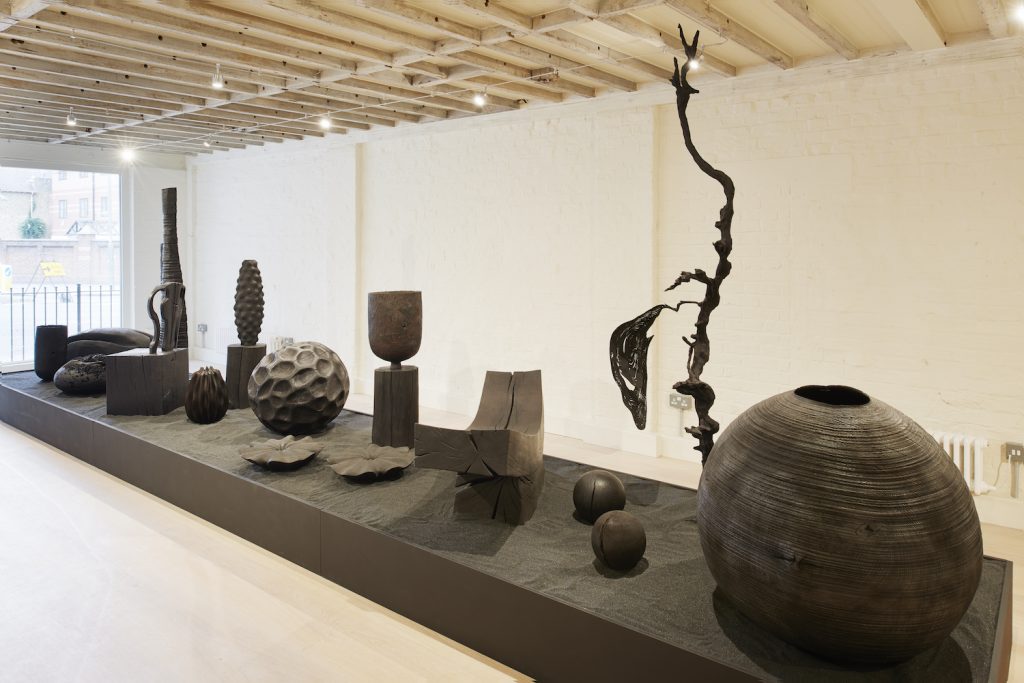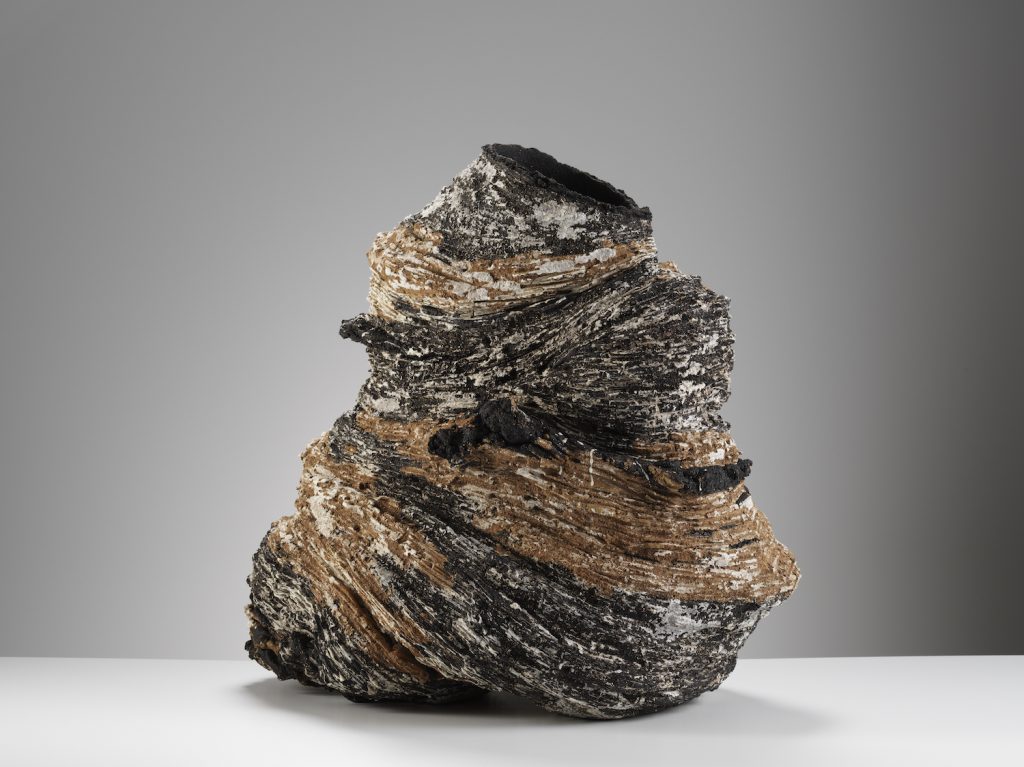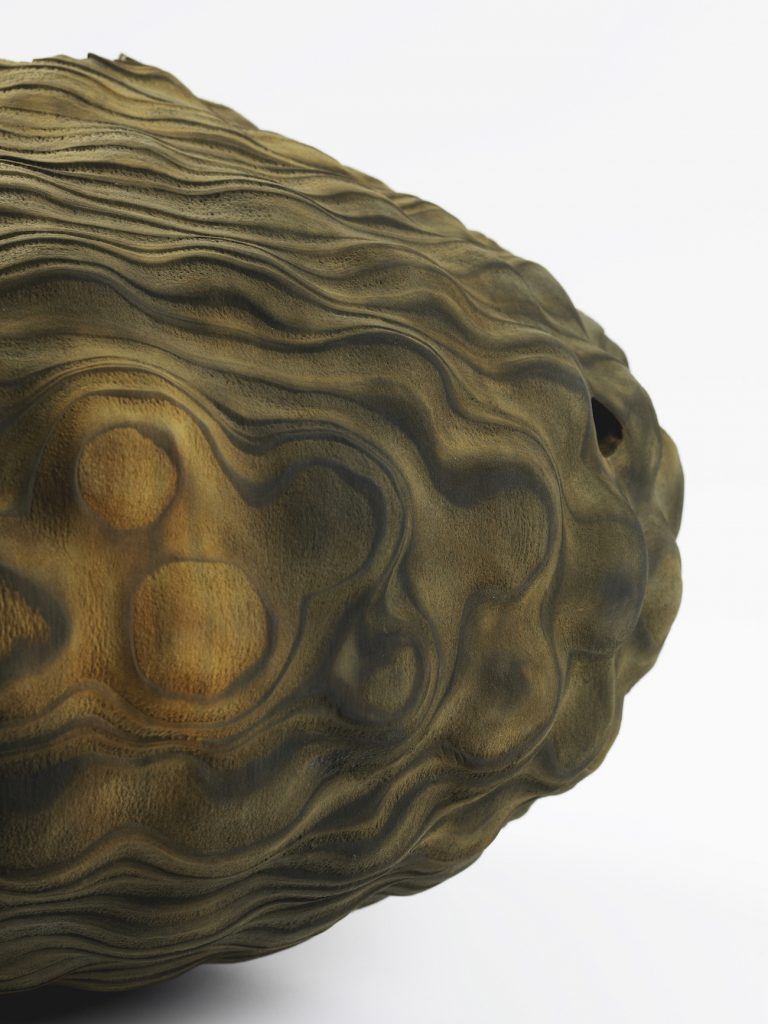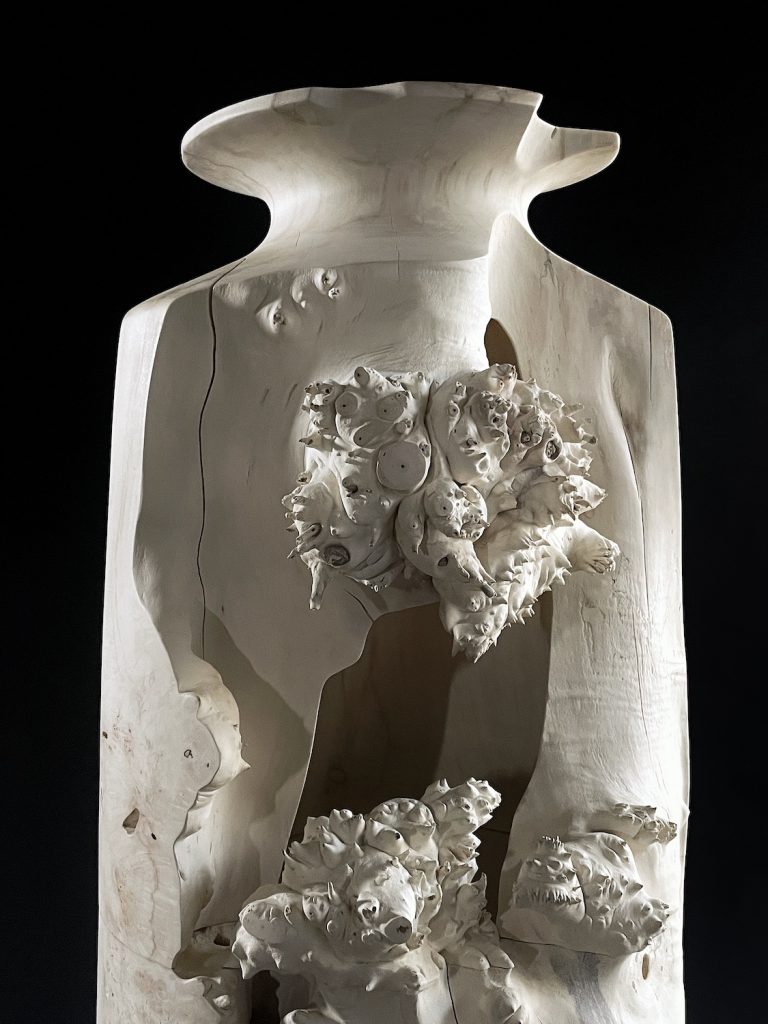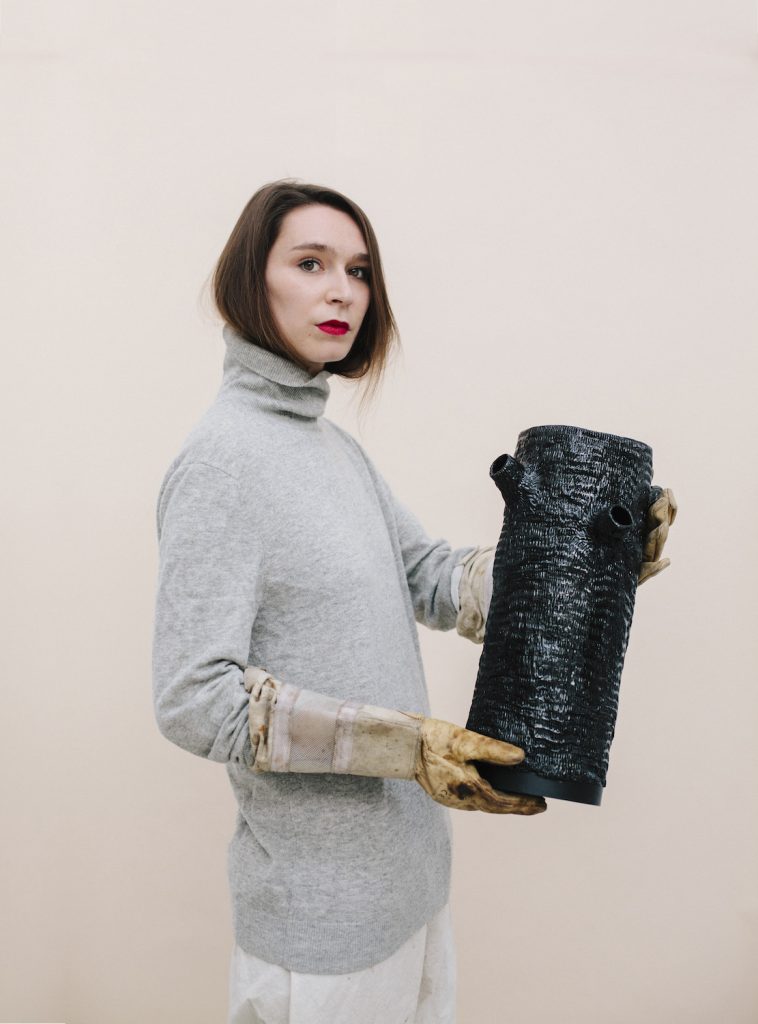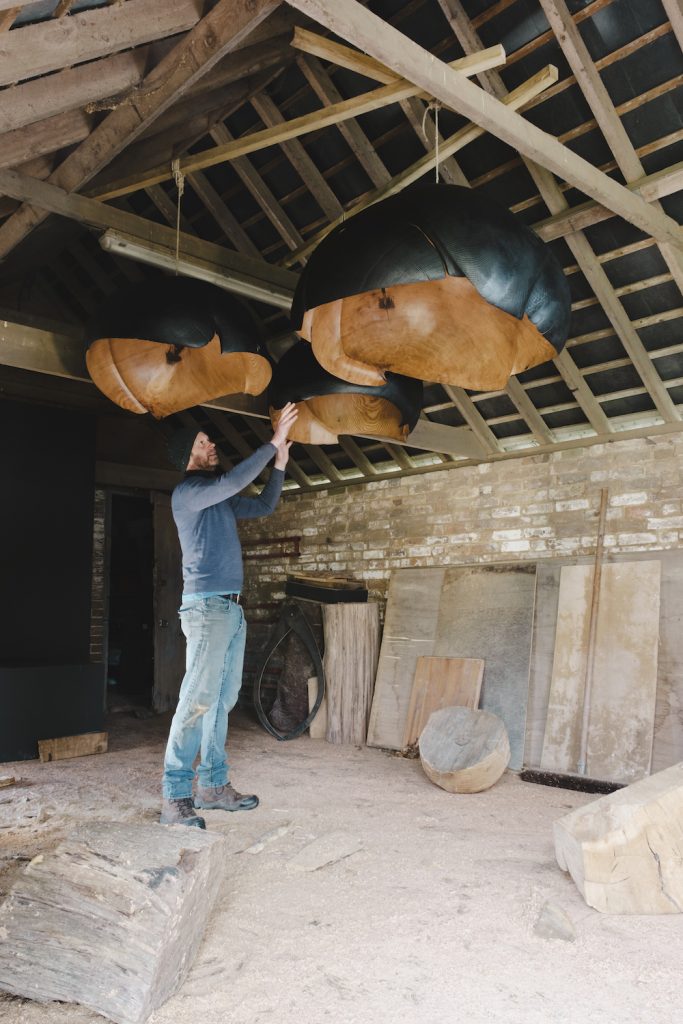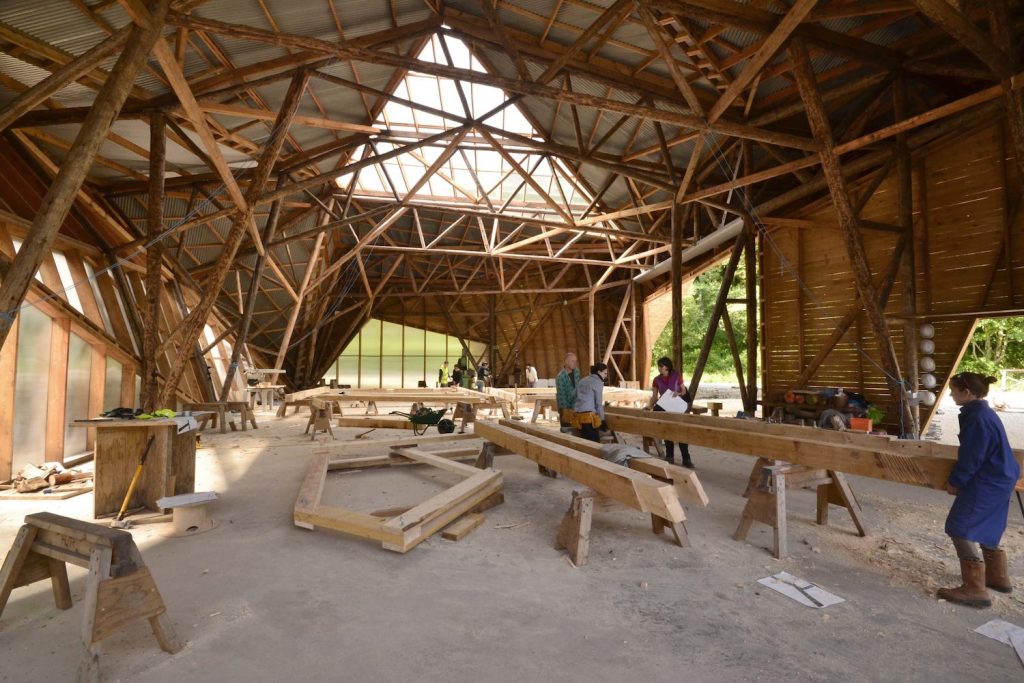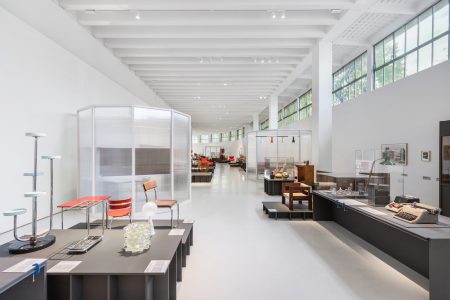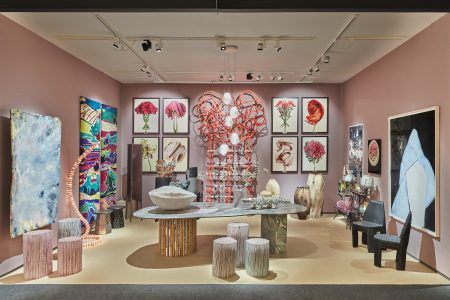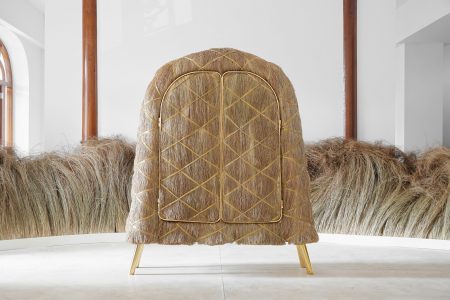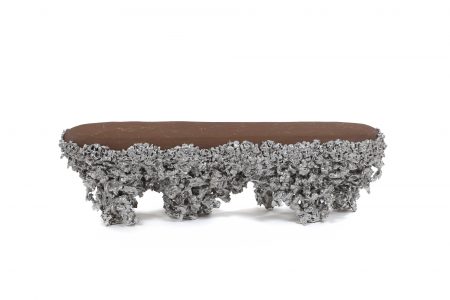Craft Culture: A Conversation with Sarah Myerscough
Sarah Myerscough is a pioneer in the promotion of contemporary applied arts and has succeeded in raising creative craft to the level of recognition it deserves. For the A/W 2022 issue of TLmag38:Origin, Lise Coirier spoke with the gallerist and collector about this dedication and passion for craft and the artists with whom she works.
Sarah Myerscough is a pioneer in the promotion of contemporary applied arts and has succeeded in raising creative craft to the level of recognition it deserves. Fine art is not only about painting, sculpture, architecture and photography, it is also about a deep culture of craftsmanship that has been going on for centuries, especially since the end of the 19th century. The creative processes, both conceptual and material, that guide these creators, whom Sarah Myerscough has been defending for more than twenty years, give rise to surprising, innovative pieces that challenge artistic traditions. Positioning herself as a gallery owner, collector and passionate about the creative and humanistic dimensions of craft, she has also nurtured a community of extraordinary artists and craftspeople from all over the world. This conversation was an opportunity to trace her journey and vision as a committed entrepreneur and to open up new perspectives for the future. Her intuitive approach opens our eyes to a greater knowledge around the genius of matter.
TLmag: Tell us about the story how you got started on this journey and the vision you have as a gallerist, collector, curator…
Sarah Myerscough: Our ambition is to be the leading international gallery that specialises in natural materials and crafted processes in contemporary design and art, a niche that we have supported and believed in for well over a decade. We have such exciting plans for the future, moving the gallery next year to a larger central space that will run a materially and conceptually progressive exhibition programme, while continuing to promote crafted art and design throughout the international fair circuit. My ultimate dream one day would be to establish an educational foundation for revitalising craft in art: to fund schools’ equipment and specialist teachers to offer our children new and diverse opportunities beyond what is principally valued in education today, so that these extraordinary processes and materials remain vital and alive in a communal art culture for the future. As a legacy, I would also really love to own enough land to plant a field of great English Oaks, which could be managed and protected through family generations… but that might be beyond my reach! As a gallery we strongly believe in the authenticity of craft culture and its vision that connects humanity back to the natural world and its origins. I know this is shared by many extraordinarily talented artists and designers, critics, collectors and art gallery professionals, as well as being shared by a wider audience beyond the art industry.
TLmag: What does the term ‘origin’ mean to you in your career and personally?
S.M.: In a similar way to Li Edelkoort’s intention for this issue, I see the ‘origin of form’ or a ‘fragment of time’ as shaping visceral connections between people and environment; this notion is creatively intrinsic to the philosophy of the artists we work with. It’s about a thread of visual integrity that binds the past to the present. I think that passing creative skills which are bound to earthly materials from generation to generation, helps us to connect to these fundamental primal considerations. Through these processes we can slowly unravel our essential humanness, as the creative excavation of these base materials – rock, clay, wood, fossils – are tangible substances that hold time and the origins of life. Culture is not just this one moment but borne from these material beginnings and in that sense, craft has a uniquely important role to play in the art world; one which opens us up to our environment and more holistically extends to a new value system and sense of community.
The gallery celebrates craft culture’s vision to communicate such important philosophies through the innate sensory act of both making and receiving an object. This exchange ultimately creates a meaningful bond between artist and viewer and opens a route to dialogue. We aim to embed this deeply within the narratives of our curated exhibitions and collections and hope to inspire, nurture and enrich through crafted design and art. I believe this niche culture can really touch people in an immediate and honest way through its unpolluted soulfulness; which the rarefied ‘fine art’ world (notionally called) might find more challenging. These crafted objects and designs surround us in our homes and are part of our everyday patterns and functions, so that we truly are living with sculpture – or more simply, sculpture is truly living. Our enduring ambition is aligned with celebrating craft as a necessary and serious genre within our visual arts, where craft artists and designers draw the same respect and reverence shown to any of our extraordinary ‘fine’ artists.
TLmag: How does your experience as collector, gallerist, advisor, etc. take into account craft as a process of digging into the origins of our cultural heritage?
S.M.: Well it’s everything, it’s all encompassing. The process of craft through its rich journey from the origins of time, as a concept, I find deeply emotive and engaging. My added experience has taught me how to look and appreciate these extraordinary skills and love material. Process is of course essential but it’s the creative vision, that innate ability to visually transcribe the past and present and tell those stories that resonates with me. Such crafted works of art, as Nic Webb has often said in our conversations, act as beacons from our past – they undulate linear time and allow us to glance, even for just a moment, into another’s life from years before – and show us through objecthood the way to understand and respect our future. Young British ceramicist Luke Fuller, whose work was acquired by the V&A Museum this year, comments that, ‘The melting pot of the past, present and speculative future is what drives my practice, as these determine our existence today. Through millennia of learned physical experience we have accumulated the knowledge and power to reform our environments; whether for better or worse we have forged and carved out the world we perceive today. The manipulation of materials and the aggregation of matter to form the physical world has the potential to amaze, shock and even confound us at times.’
Indeed, when you visit the V&A Museum you are surrounded by such beacons that speak of humanity and represent the very best periods in history and our contribution to the planet. As a collector, such pieces are a privilege to live with at home and offer a continual dialogue and challenge, as well as wonder and delight. They remind me of our rich past of storytelling and how objects can be an embodiment of our core yet varied beliefs, in perhaps a more profound and spiritual way. These notions are summed up so accurately by Carlo Rovelli’s simple statement that the ‘world is made of events and not things’; so when digging up our cultural heritage we are unearthing ‘events’ – big and small – to make sense of our origins through the history of objects.
TLmag: Do we need to elevate ‘applied arts’ so that it is more connected to the field of fine arts? Is this important?
S.M.: For me, ‘applied’ art and ‘fine’ art are labels, forms of classification that are problematic. They can damage and limit creative experimentation and the role of art and design in our lives. It’s the intention of art, not its status, that is key to its relevance; or as Richard Redgrave commented, ‘its poetic impressions on the mind.’ Similarly, John Ruskin, one of the greatest advocates for the ‘decorative’ arts, believed poetry could manifest itself anywhere if the conceptual will was there. William Morris likewise believed in the socialist principle that crafted work could generate psychologically fulfilled people. Perhaps that’s true to a degree. I’m always so delighted to glimpse this principle first hand at fairs and exhibitions when the level of engagement in the works on display can be very heart warming – it’s quite an intimate and unguarded moment to share with someone.
We are noticing more recently an exciting revival and critical appreciation of hand-crafted art and design that is no longer a pre-industrial throwback but a distinct twenty-first century phenomenon. All art culture – galleries and museums, interior design and architecture – is beginning to recognise the vital role this genre has to play in education and support human value systems. Perhaps craft as a material intelligence, celebrated by Glenn Adamson, can banish a false form of hierarchy of the many intelligences within the human mind. We have an opportunity to reconsider the important role of craft and those talented artists and designers that offer thoughtful and precious insights into the origins of time, humanity and creation of our world.
TLmag: What do you cherish the most in this field– not specific artists or artworks, but in general – what keeps you inspired?
S.M.: Of course, I cherish and feel privileged to engage with such extraordinary artworks, however I find my relationships with the artists and designers equally inspiring. For example, I visited three young designers in their London studios many years ago, during a key moment in the creative journey of the gallery; Fernando Laposse, Marlène Huissoud and Marcin Rusak. I found their involvement in experimental design so inspirational. Their collective design approach was so entirely innovative and refreshing; however, fundamentally, friendship, support and mutual respect was core between them. It was nothing really that I had witnessed in the art world; real community and collaboration. Now, of course, they are scattered across the world following their dreams with great success, however that shared value system stuck with me. It’s this connectivity that I witness time and again in the craft and design community and which I think could have a profound relevance in our cultural world today. As I have said, craft is synonymous with life stories that tell truths about human psychology through objects. So when artist Eleanor Lakelin touches with her fingertips stone fragments in her pocket or turns a huge Horse Chestnut burr on a lathe, both activities encapsulate the origins of humanity and the natural world. I cherish such poetic and philosophical experiences and significant interactions with material, whether momentary or sustained. As we develop as a gallery, it becomes increasingly important to communicate these narratives, these communities and shared creative codes and languages. Returning to Fernando, Marlène and Marcin; their crafted design objects tell us about their lives, their childhoods, what they believe in for the world and it all goes beyond the physical artwork: for Fernando, it’s a desire to sustain Mexican farming communities; for Marlène its to care for the insect world and her beloved bees; and for Marcin, through his family history as flower growers, it is to reveal and celebrate the fragility and transience of life.
TLmag: Are there any books or texts that inspire you?
S.M.: I recently read Bruno Munari in ‘Design as Art’ and agree that it’s the ‘ephemeral kind of beauty of crafted art work that offers a stable appreciation of authenticity’, a belief, as he says, in ‘a kind of man made nature’. This statement seems entirely convincing when I think of the ceramic sculptures by Luke Fuller, the surfaces of which investigate the conflation of unnatural, natural landscapes – most recently, Port Talbort, where his great grandfather was a steel miner.
Another statement that has such potency for me is, ‘when man ceases to create he ceases to live.’ (Lewis Mumford). This interestingly puts me in mind of Teresa Hastings’ personal creative and challenging journey to the foothills of the Indian Himalayas, where she has embarked on producing an ambitious tapestry project. Her aim is to develop her practice with a zero impact on animal or nature, whilst collaborating with traditional local artisans and supporting the use of local materials. She faces daily toiles in the simplest of activities due to dramatic weather patterns and logistical difficulties, enduring physical exhaustion through washing wools, spinning and dying. Will these tapestries, destined for the FOG art fair in San Francisco, resonate with these extraordinary events? I suspect a resounding yes; but they also offer a deeper spiritual story, ‘an ephemeral kind of beauty’, that is experienced through abstract materiality, sensory touch and sculptural craft complexity. Life, for Teresa, is quite literally creating in the most astonishing way!
John Makepeace OBE is a resolute exemplar of this kind of contemporary renaissance craft person that I have talked about in this conversation. He is an inspiration to us all. From setting up Parnham College of furniture with Bauhaus principles, to the creation of Hooke Park, an ambitious woodland project that inspired many to follow in his footsteps and develop businesses engaged in sustainable practices. And now, in his zenith, John has developed a ten-year programme with the V&A Museum to educate us in how to use natural materials in contemporary design. Such events are harmoniously balanced with his practice as a furniture maker and when you look, touch and respond to his work, it’s these achievements that resonate. He once said that ‘a significant part of our being needs to be sustained by tangible objects which enrich our sensibilities’. This is unquestionably true.
@sarahmyerscoughgallery
